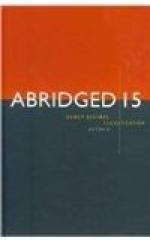In both the Authors’ Catalogue and the Subject Index, brevity has been studied because of the economy, but more because of the much greater ease of reference to a short title catalogue. The custom of giving full titles, etc., under authors, and only references or very brief titles under subjects, has been reversed. A reader seeking a book of a known author, in the vast majority of cases, wants simply the number by which to call for it, and can find it much sooner in a brief title catalogue. In the rare cases where more is needed the class number refers instantly to all these facts on the cards. On the other hand, a reader seeking books on a known subject, needs the full title, imprint, cross-references, and notes, to enable him to choose the book best suited to his wants.
The Subject Catalogue is a full title Shelf List on cards and is for the use of the public. The Shelf List is a short title Subject Catalogue in book form, made of separate sheets laced into an Emerson binder, and is for official use. We thus have without extra labor, both full and short title Subject Catalogues and Shelf Lists. The public Authors’ Catalogue is a printed volume; the official Authors’ Catalogue or Index is on cards. As a result each of the public Catalogues is checked by an official Catalogue; each of the card Catalogues by a book Catalogue; each of the brief title catalogues by a full title catalogue—an advantage that will be appreciated by all librarians desiring accuracy of administration and catalogues.
The Arabic numerals can be written and found more quickly, and with less danger of confusion or mistake, than any other symbols whatever. Therefore the Roman numerals, capitals and small letters, and similar symbols usually found in systems of classification are entirely discarded and by the exclusive use of Arabic numerals in their regular order throughout the shelves, classifications, indexes, catalogues and records, there is secured the greatest accuracy, economy, and convenience. This advantage is specially prominent in comparison with systems where the name of the author or the title must be written in calling for or charging books and in making references.
Throughout the catalogues the number of a book shows not only where it is but what it is. On the library accounts the character of each person’s reading is clearly indicated by the numbers charged, and the minutest statistics of circulation in any subject are made by simply counting the call slips in the check box, and recording the number against the class number in the record.
By the use of size numbers the greatest possible economy of space may be secured, for the size distinction may be made for every inch or even less if desired, and this without additional labor, as it will be seen that the size figure, when introduced, requires one less figure in the book number, and so does not increase the number of digits as would at first appear.




